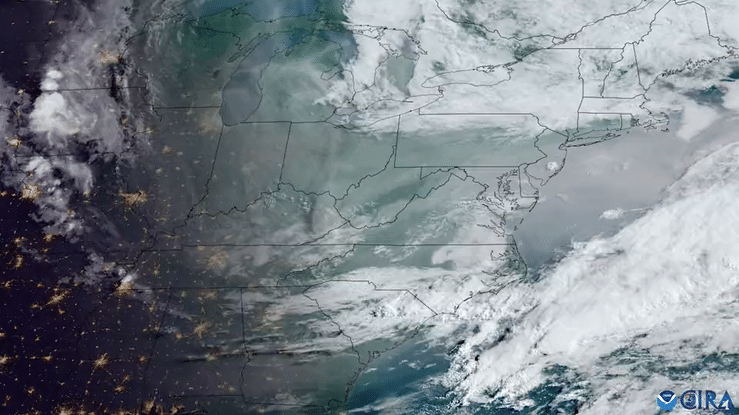Satellite imagery shows the vast extent of wildfires in Canada and the lingering veil of smoke over the Eastern U.S.
A heavy haze grounded flights and spurred “Code Purple” air quality alerts in eastern cities this week as wildfires gave rise to record levels of air pollution. While air quality is slowly improving, smoky conditions persist, as shown in satellite images from Colorado State University’s Cooperative Institute for Research in the Atmosphere and the National Oceanic and Atmospheric Administration.
Close to 430 wildfires are burning across Canada, including more than 140 in Quebec, and most fires remain out of control. Satellite images show blazes erupting in Quebec this week, sending smoke south toward the U.S.
So far this year, wildfires have scorched more than 12 million acres in Canada. Along with hotspots in Quebec, more than 140 fires are burning in Alberta and British Columbia, shown below. Scientists expect that wildlife smoke will reach as far as Norway.
The National Weather Service said that, heading into the weekend, smoke “is expected to continue plaguing regions from the Great Lakes to the Mid-Atlantic with reduced air quality.”





